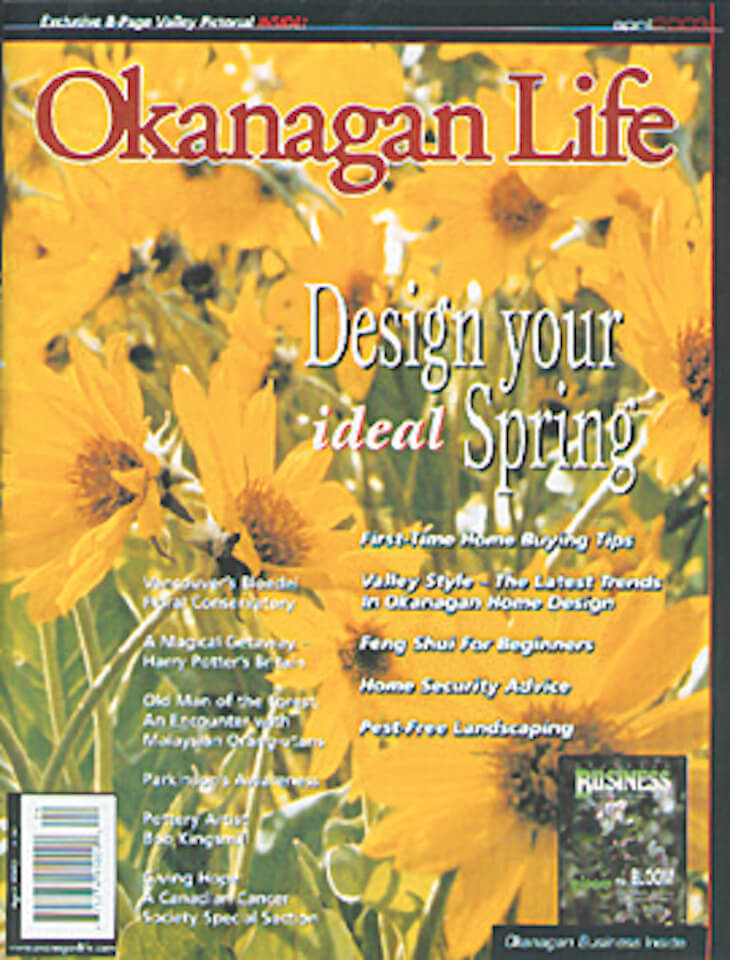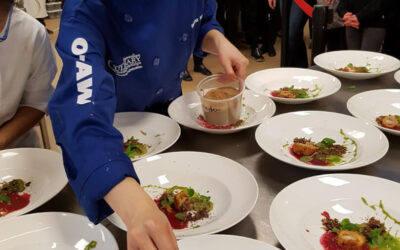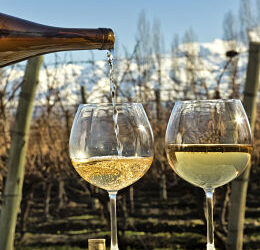So, for the new food and wine lover, here is my four-step guideline to wine appreciation.

By Dennis Dwernychuk

Mia Papodopoulos tasting at the Okanagan Life wine awards in 2016
Times are a changing! What does it tell you when the world’s largest fast food company experiences it’s first revenue loss. Perhaps North Americans are fed up (no pun intended) with animal fat-soaked artificial beef and chicken parts. We are slowly but surely taking on the health conscious Mediterranean diet; olive oil instead of butter, garlic, Provençal herbs, fresh fruit and vegetables, lean meats, and an exponential demand for red wine. More and more consumers are appreciating the satisfaction of preparing healthy meals accompanied by a robust glass of wine.
So, for the new food and wine lover, here is my four-step guideline to wine appreciation. This analysis demands an unpretentious attitude; there is no such thing as a wine expert. I have been in the business for more than 25 years, and I haven’t come across an “expert” yet. Every bit of wine knowledge you acquire makes food and wine pairing that much easier. Here goes!
First
Appearance: Make sure you have clean stemware, well rinsed, with a sufficient bowl and tapered top to allow a sample to be swirled without it being ejected onto your neighbour’s white satin dress. Premium glass manufacturers like Reidel and Villroy and Boch have several shapes and sizes for different varietals at a premium price. I have found the classic Bordeaux style to be the best overall glass shape.
Pour only one third of a glass. This will allow you to effectively swirl the wine and release the aroma components up the inside surface. Look for both colour and clarity.
The sample should be free of haze, cloudiness and surface film. Any of these conditions may indicate bacterial spoilage or other defect. Older wines should be stood up in bottle for a few days and decanted prior to serving. I decant all red wines.
Colour is observed at the far meniscus line and the centre of the bowl. Look for intensity, opaqueness, or transparency. White wines gain colour with age, while red wines loose colour with age. White wines change from yellow-greens through golden yellow to yellow-brown while red wines change from purple through purple-red to garnet to red-brown; all a function of natural reductive oxidation.
Second
Aroma: Smell is everything! Most of wine appreciation resides in your nose. Aroma is divided into:
- Primary – characteristics of a particular grape variety. Each grape has an identifiable genetic blueprint predisposing it to a set of specific aromas – Merlot vs. Cabernet Sauvignon vs. Shiraz.
- Secondary – aromas associated with alcoholic fermentation
- Tertiary – also known as bouquet, the essence derived from oak barrel and/or bottle maturation. When nosing a sample, use specific adjectives; cassis, blackberry, pineapple and so on, rather than flowery or fruity. This will develop your ability to distinguish among and between the varietals. Shiraz from British Columbia, Australia, and the Rhone Valley of France will have similar but unique characteristics as a function of soil, micro-
climate, grape growing, and wine making techniques specific to each region.
Third
Taste: Your tongue is divided into four main receptor areas. The front detects sweet, the sides acidity – what many call sour, salt is tasted over the entire surface, and bitter at the back.
That’s it. What you perceive as flavour is a combination of these four areas plus a retro-nasal effect.
Tactile sensations of weight and body are primarily due to the effects of alcohol; increases in the alcohol content increase your perception of sweetness, glycerol, tannin; the drying effect over the entire mouth surface, and residual sugar.
White wines should be “balanced” between the perceptions of sweetness and acidity while red wines are balanced among sweet, acid, and tannin for any given level of flavour perception.
Fourth
Finish: the perceived persistence of flavour after swallowing. This perception should be consistent with the aroma and flavour intensity. The longer the better! A totally balanced wine possesses integration and equivalent intensity between aroma, taste, and finish.
Make notes on the attributes you appreciate in particular wines. Remember wine tasting is subjective, what you appreciate will be different from what I like. The differences are a function of our tasting and smelling experiences throughout our lives. The main thing is to have fun.
Finally, two service tips.
- Chill white wines only one hour prior to serving. Your palate’s ability to perceive detail in wine is a function of molecular size. The colder the sample the more difficult it is to sense the full extent of a white wine’s character.
- Decant all red wines. This will release the aroma and flavour components. I constantly hear people comment that the wine was better when the bottle was almost empty. Removing the cork to let a wine “breathe” is a
fallacy; only the top inch of wine benefits.
Now get out there, gather some friends and do a blind tasting. What a great way to learn about this growing lifestyle. Cheers!
Read more of the original stories celebrated in our 30th-anniversary issue.
Canada Is Older Than the USA
A History Lesson to Expose the Depth of "the Totally Unacceptable Insults and Unprecedented Threats" Made by President Donald Trump to "Our Very Sovereignty." Anthony James Hall “…. the totally unacceptable insults and the unprecedented threats to our very sovereignty...
Gordon Lightfoot Tribute by John Paul Byrne
Enjoy live music and wine in our Jacko's Underground Lounge. Doors open at 5pm! Pizza always available and Charcuterie for pre-purchase. John Paul Byrne's Gordon Lightfoot Tribute Concerts are selling out in the Okanagan as most all performances have people raving...
READ MY MIND – the Gordon Lightfoot Tribute Show – October 9, Creekside Theatre
https://www.ticketseller.ca/tickets/event/read-my-mind-the-gordon-lightfoot-tribute-show READ MY MIND - the Gordon Lightfoot Tribute Show has taken off in the past 6 months, with over 55 performances. A solo, duo, trio to start,...
Read My Mind – The Gordon Lightfoot Tribute Show
Read My Mind - The Gordon Lightfoot Tribute Show at SILVERSTAR BREWING CO Downtown Vernon Saturday October 26th. Join us for an unforgettable evening as we celebrate the timeless music of Gordon Lightfoot with the Paul Byrne-led tribute band. Experience the nostalgia...
Local singer-songwriter brings Gordon Lightfoot’s timeless music to life at Creekside Theatre
John Paul Byrne delivers a rich and authentic experience that honours the legendary Canadian icon KELOWNA, BC – Fans of folk music are invited to a special evening at Creekside Theatre in Lake Country on October 9, 2024, as local singer-songwriter John Paul...
Quintland: Five strong story sells
Shelley Wood's debut historical novel tops best-seller list In the 1930s, public appetite was insatiable for news and images of the Dionne quintuplets. Before reality TV shows and viral videos, the unlikely survival of five identical babies in a small town in Northern...










0 Comments